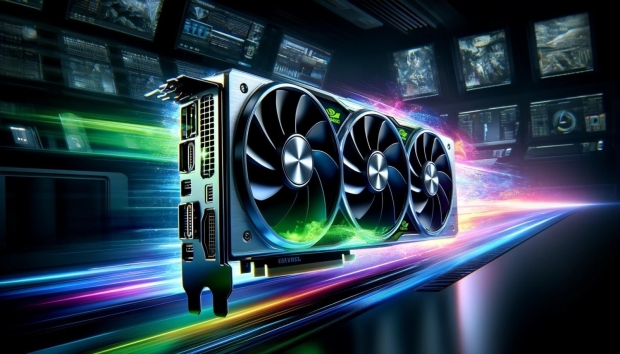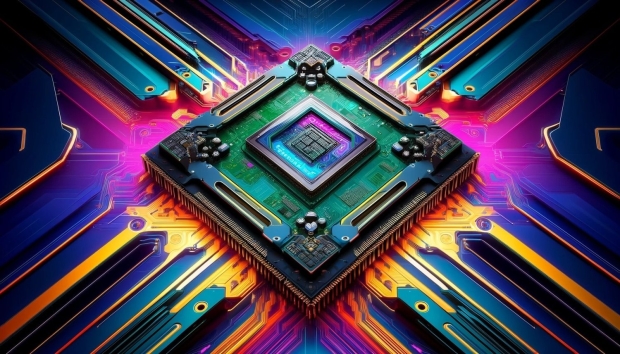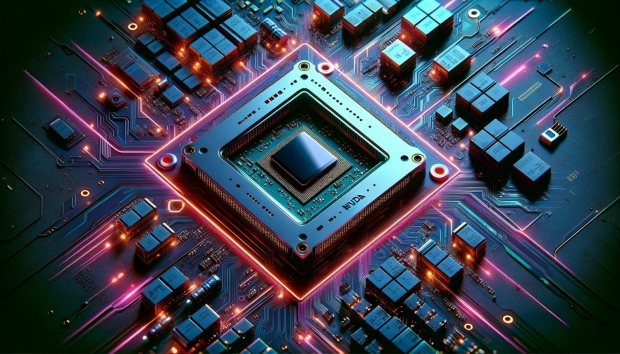NVIDIA's next-generation flagship GeForce RTX 5090 has some new leaked specs, with the GB202 GPU configuration being leaked onto X by kopite7kimi:
GB202 is going to be an absolute freaking beast, offering 33% more CUDA cores than the AD102 GPU inside of the GeForce RTX 4090, with GB202 rumored to pack in an incredible 24,576 CUDA cores. AD102 has just 18,423 CUDA cores in comparison. GB202 will power the new ultra-enthusiast flagship GeForce RTX 5090 graphics card, which is rumored to have a monster 512-bit memory bus with ultra-fast, next-generation GDDR7 memory.
RTX 5090 performance expectations: I'm expecting to see at least a 50% improvement in 4K gaming performance, with that coming from a mix of Blackwell GPU architecture improvements over Ada Lovelace, and the wicked new, ultra-fast GDDR7 memory on that deliciously huge 512-bit memory bus. We should expect at least 50-70% more 4K gaming performance with Blackwell + GDDR7 + 512-bit memory bus, and that's without DLSS 4 in the mix.
- Read more: NVIDIA's next-gen GeForce RTX 50 series GPU detailed: GB202, GB203, GB205, GB206, and GB207
- Read more: NVIDIA GeForce RTX 5090 rumored specs: 28GB GDDR7 on 448-bit bus, 1.5TB/sec bandwidth
4K 240FPS gaming shouldn't be an issue for the GeForce RTX 5090, and while you won't be playing Cyberpunk 2077 at 4K 240FPS... you will play all manners of esports games and regular games that aren't GPU destroyers, at 4K 240FPS. There are more and more monitors coming out with 4K 240Hz support, but the GeForce RTX 4090 is the fastest GPU on the planet that you can use... for now.
RTX 5080 performance expectations: The CUDA core count on the GB203 GPU that should power the GeForce RTX 5080 isn't as big as a leap as GB202 was to AD102. AD103 (the GPU inside of the GeForce RTX 4080 SUPER) features 10,240 CUDA cores, while GB203 features 10,752 CUDA cores... a tiny increase.
We should expect performance upgrades through Blackwell GPU improvements, but the ultra-fast GDDR7 memory standard will be used on the GB203-based GeForce RTX 5080 (and the RTX 5080 SUPER when it arrives). We should expect 20%+ improvements across the board, maybe more, in 1080p and 1440p gaming, while 1440p and 4K gaming will get some large improvements from the new ultra-fast GDDR7 memory.

GDDR7 details: Samsung has its next-gen GDDR7 memory ready for NVIDIA, with GDDR7 memory speeds of 28Gbps and 32Gbps. We could see the faster 32Gbps GDDR7 on the RTX 5090 and 28Gbps GDDR7 on the RTX 5080, and probably on the rest of the RTX 50 series GPU fleet.
- Read more: NVIDIA GeForce RTX 5090 and RTX 5080 will be available within a few weeks of each other
- Read more: NVIDIA testing 250W to 600W coolers for next-gen GeForce RTX 50 series GPUs
- Read more: NVIDIA's next-gen GeForce RTX 5080 rumored to now launch BEFORE the RTX 5090
- Read more: NVIDIA's next-gen RTX 5090, RTX 5080 Laptop GPUs rumored with 16GB VRAM
- Read more: NVIDIA rumored to ONLY launch GeForce RTX 5090 this year
- Read more: NVIDIA's next-gen GeForce RTX 5090, RTX 5080 rumored for Computex 2024 reveal
- Read more: NVIDIA to unveil top-end GeForce RTX 5090, and high-end RTX 5080 at first later this year
4K performance: NVIDIA's next-generation ultimate gaming GPU in the GeForce RTX 5090 should have 50-70% more performance across the board compared to the RTX 4090, especially at the higher-end 4K resolution. 4K 120FPS gaming should be an even easier achievement for the RTX 5090 than it is for the RTX 4090. We've got 4K 240FPS coming this year and in 2025, so the RTX 5090 will be the GPU of choice for 4K 240FPS gaming in the future.

RT performance: This is where the biggest performance improvements of the next-gen Blackwell-based GeForce RTX 50 series GPUs will come: ray tracing. Expect some rather large 2-3x performance gains using RT, probably 4x or more in some cases with the RTX 5090 and RTX 5080 against their RTX 40 series counterparts. Throw new DLSS 4 on top, and you've got some wowzers RT performance.
DLSS 4: This is probably my personal favorite part of the excitement of next-gen GPUs from NVIDIA, AI-powered upscaling with a next-gen DLSS 4 that works only on the new Blackwell-based RTX 50 series GPUs. We should expect even higher image quality than offered by DLSS 3.x and new levels of performance with DLSS 4 enabled on a new RTX 5090 or RTX 5080 graphics card.
Power efficiency: NVIDIA's current-gen GeForce RTX 4090 can use anywhere between 450W and 600W of power depending on the model and overclocking, but the new GeForce RTX 50 series GPUs will offer far more performance-per-watt of the leading RTX 4090 and RTX 4080 SUPER graphics cards. Another exciting part to see unravel in the near future.













